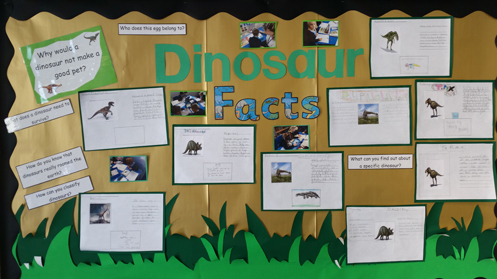Watching the Beautiful Birdie – Early Cretaceous
Early Cretaceous Enantiornithine Shines Light on Early Bird Evolution
A tiny, beautifully preserved fossil of a baby bird is helping scientists to shine a light on the early evolution of some of the first birds. The fossil represents an enantiornithine bird and researchers, including Dr Fabien Knoll (Manchester University), have used synchrotron radiation to analyse the microscopic structure of the bird’s skeleton in order to assess at what stage of development the poor creature was at when it met its demise.
An Elemental Map of the Fossilised Skeleton was Created using Synchrotron Radiation
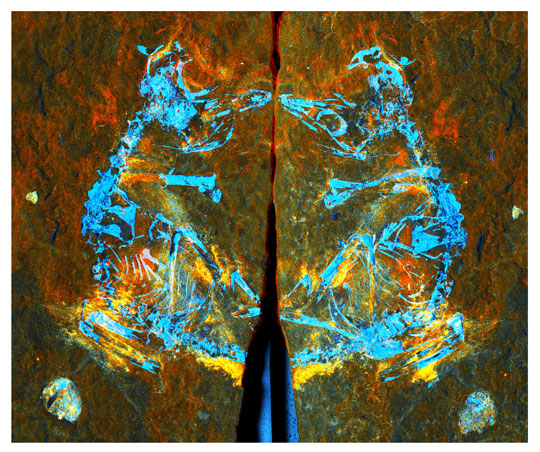
Picture credit: Manchester University
The Enantiornithes – Early Birds
The Enantiornithes were a clade of diverse Cretaceous birds that possessed several characteristics of modern birds (Neornithines) but were also anatomically different in a number of respects. They retained claws on their wings and most species had teeth, in contrast to all modern Aves which are edentulous. Despite having an almost global distribution and being regarded as the most specious and successful birds of the Cretaceous, the Enantiornithes are thought to have become extinct at the same time as the last of the non-avian dinosaurs.
A study published in 2016 proposed that the evolution of a toothless beak may have helped some types of birds to survive the end Cretaceous mass extinction event. To read an article summarising the study’s findings: Seed Eating May Have Helped Some Birds Survive the End Cretaceous Extinction Event.
The Enantiornithine Bird – One of the Smallest Mesozoic Avian Fossils Described
The specimen preserved on a slab and counter slab is one of the smallest Mesozoic bird fossils to have been found to date. The specimen measures less than five centimetres in length and the baby bird would have been able to sit in an egg-cup. However, it is remarkably well-preserved and the skeleton is virtually complete and what makes this fossil so significant is the fact that the baby bird died shortly after emerging from its egg.
The poor, unfortunate bird might have had an extremely short life, but it has given researchers a rare opportunity to analyse a baby bird’s bone structure and assess its skeletal development.
A Reconstruction of the Cretaceous Bird
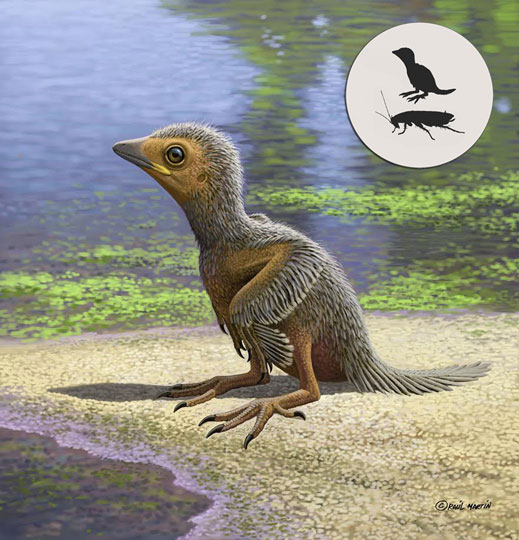
Picture credit: Raul Martin
Assessing Bone Structure and Development
The scientists have been able to study the ossification of the bones, how they were growing and developing. A better understanding of the skeleton of the very young bird will help researchers to better understand whether this bird species was capable of flight soon after birth and how independent it was.
Lead author of the study, Dr Fabien Knoll (Interdisciplinary Centre for Ancient Life [ICAL] at the School of Earth and Environmental Sciences, Manchester University) and the ARAID Dinopolis in Spain stated:
“The evolutionary diversification of birds has resulted in a wide range of hatchling developmental strategies and important differences in their growth rates. By analysing bone development, we can look at a whole host of evolutionary traits.”
Lead Author of the Study Dr Fabien Knoll Prepares the Specimen for Analysis
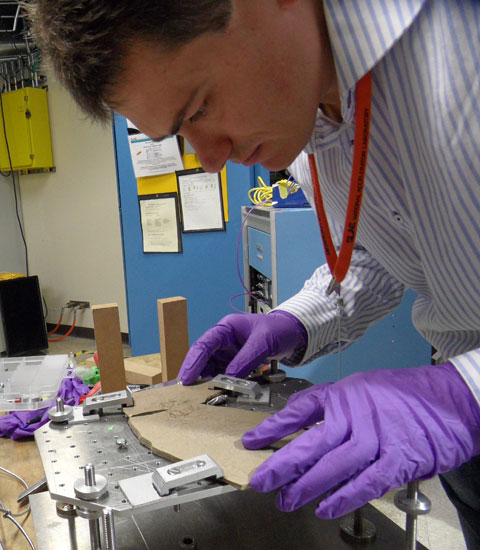
Picture credit: Manchester University
Altricial, Precocial or Somewhere in Between
As the fossil was so small, being less than the length of the average person’s little finger, the team used synchrotron radiation to analyse the specimen at a “submicron” level. The skeleton could be assessed in extreme detail and the microstructures of the bones observed.
Dr Knoll explained:
“New technologies are offering palaeontologists unprecedented capacities to investigate provocative fossils. Here we made the most of state-of-the-art facilities worldwide including three different synchrotrons in France, the UK and the United States.”
New Technology Helps to Map the Elemental Composition of an Ancient Bird Fossil
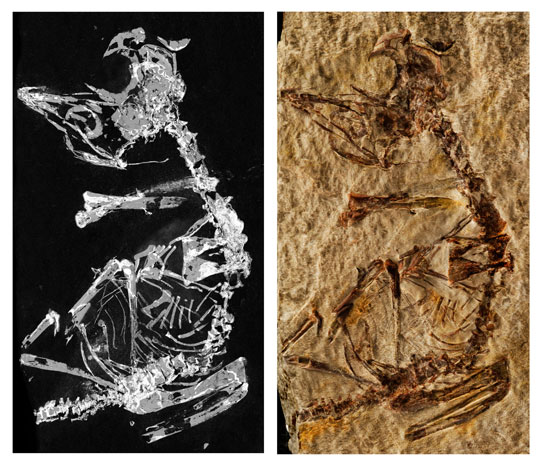
Picture credit: Manchester University
Synchrotron Analysis
The synchrotron analysis determined that the baby bird’s sternum (breastplate bone) was largely composed of cartilage and had not completely ossified. The absence of hard bone in the sternum suggests that this bird could not fly. The patterns of ossification observed in this and the other few, very young enantiornithine birds known to date also suggest that the developmental strategies of this particular group of ancient avians may have been more diverse than previously thought.
The researchers remain cautious and don’t wish to definitively come down on one side of the argument in terms of how dependent/independent this baby bird could have been. The lack of bone development does not necessarily prove that the hatchling was reliant on its parents for feeding and care (altricial trait).
Bird Evolution
Modern birds demonstrate a variety of behavioural responses when it comes to bringing up babies. Some bird species like chickens and ostriches have highly precocial young. The babies are able to leave the nest and feed themselves within hours of hatching. In contrast, most of the passerines (song birds) such as robins, blackbirds and thrushes are helpless when they hatch and rely on their parents to feed them and to keep them warm.
Altricial and precocial behaviours tend to be at opposite ends of a spectrum, the breeding strategy employed by this enantiornithine remains obscure. As extant Aves exhibit a variety of breeding strategies from totally altricial through to super precocial (such as the megapodes, an example being the Australian brush turkey), it is difficult to clarify the development strategy of any extinct species.
Altricial and Precocial Behaviours can be Viewed as Opposite Ends of a Spectrum
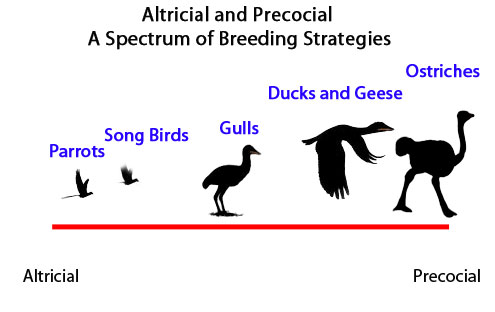
Picture credit: Everything Dinosaur
Co-author of the study, Luis Chiappe (Los Angeles Museum of Natural History) added:
“This new discovery, together with others from around the world, allows us to peek into the world of ancient birds that lived during the age of dinosaurs. It is amazing to realise how many of the features we see among living birds had already been developed more than 100 million years ago.”
Everything Dinosaur acknowledges the assistance of a press release from Manchester University in the compilation of this article.
Visit the Everything Dinosaur website: Everything Dinosaur.


